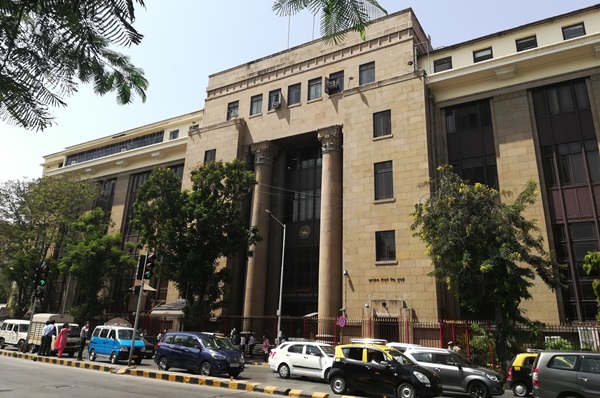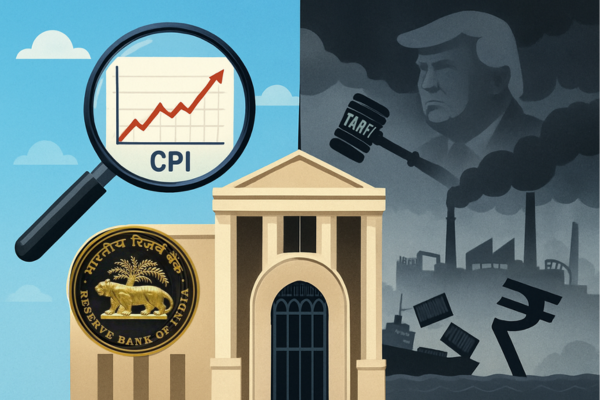.png)
RBI Should Stay on Hold in October to Preserve Stability
With inflation subdued and growth resilient but external shocks looming, the RBI’s wisest move in October is to pause and preserve stability.


Srinivasa Rao, ex-Economic Advisor at Finance Ministry, spent 28 years in IES, and now heads strategy at Bajaj Finserv.
September 30, 2025 at 4:01 AM IST
India’s central bank faces one of its most delicate policy calls in recent years. Inflation is running well below target, the growth momentum is surprisingly robust, and fiscal reforms have provided fresh tailwinds. Yet global headwinds are mounting, the rupee is under strain, and the transmission of past easing is still incomplete. Against this backdrop, the most prudent course of action at the October monetary policy review is to keep rates on hold.
India’s headline growth numbers have flattered expectations. The economy expanded 7.8% in the April–June quarter, and for the full year growth could hold near 7%, even if subsequent revisions temper the optimism. Services activity is buoyant, manufacturing has held up, and recent GST reforms have improved business sentiment.
The OECD has already revised its forecast for 2025-26 upwards to 6.7%, citing resilient domestic demand and supportive fiscal policy. Yet beneath the surface, private investment remains subdued, household balance sheets are stressed, and wage growth is stagnant. Much of the momentum still stems from government-led investment rather than private capital formation.
Inflation, meanwhile, looks benign. Headline consumer price inflation has stayed below 4% for seven consecutive months, falling to 2.7% in August. Core inflation is muted, food prices have even dipped into negative territory, and GST 2.0 reforms have rationalised rates on essential goods and services.
This trajectory gives the Monetary Policy Committee room for manoeuvre.
But the risks cannot be dismissed. Excess rainfall has damaged crops in northern and central states, raising the prospect of food-price spikes. The rupee has breached 88.80 to the dollar, and a weaker currency could stoke imported inflation. Global tariff wars, particularly the Trump administration’s fresh duties on Indian goods, add further uncertainty.
External shocks loom large. US tariffs of 50% on Indian exports, with the threat of 100% duties on pharmaceuticals, have unsettled trade prospects. Export-oriented MSMEs in textiles, seafood, and auto components are already feeling the pinch. Coupled with tighter visa norms and persistent portfolio outflows, the external environment has become more volatile. A rate cut at this juncture could aggravate pressure on the rupee, invite speculative flows, and dent investor confidence.
Market expectations are split. A Reuters poll shows a majority of economists expecting the repo rate to stay at 5.50%, though a vocal minority anticipates a 25-basis-point cut. Nomura assigns a 70% probability to easing, while SBI Research has openly advocated for it. Their argument rests on subdued inflation and external drags on growth.
Yet many others believe monetary policy has limited effectiveness in countering today’s headwinds, and that fiscal measures should take the lead.
The Reserve Bank of India under Governor Sanjay Malhotra has emphasised stability and data dependence. The October review offers a chance to reinforce that approach. A pause would not signal inaction. It would instead underline a commitment to balance: anchoring inflation expectations, managing currency risks, and allowing past easing to work through the system. It would also align with the RBI’s dual mandate—ensuring price stability while enabling sustainable growth.
Updated projections are likely to reflect these dynamics. Inflation estimates may be trimmed from 3.1% earlier to around 2.5–2.7%, while growth could be marked up to 7%. Policy commentary will focus on three areas: the impact of GST reforms on prices and activity, prudent management of the rupee in volatile markets, and the monitoring of global spillovers. Such a framework would reassure investors that India remains on a stable course, even in a turbulent world.
The key lies in timing. A hold today does not preclude easing later. It allows the RBI to assess the lagged effects of recent cuts, the durability of GST-driven disinflation, and the extent of external disruptions. By choosing patience over haste, the central bank will safeguard its credibility and preserve space for action when it is most needed.
For the October review, the case for caution is overwhelming. The MPC should hold rates steady and reiterate its neutral stance. The pause will be growth-supportive by ensuring currency stability, preserving investor confidence, and giving reforms the time to embed. In central banking, restraint is often the boldest choice.
Also Read:
Monetary Policy Should Look Beyond Repo Rate Cut
India’s Wage Malaise Leaves RBI Little Room to Hide



